The Ultimate Guide to Infusing Your Drinks
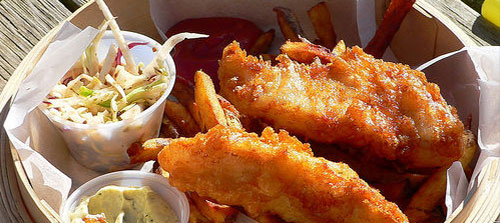
So the solution has been to go back to basics and infuse booze with real fresh fruits, vegetables, herbs and spices, to ensure a truly authentic natural flavour that includes no nasty chemicals or additives to boot. Many bars and restaurants have begun to create and serve their own infused vodka, gin, tequila and even whiskey, as well as alcohol-free drinks such as fruit infused water with great success, and it’s so simple to do that there’s no reason why you can’t too.
How to Begin Infusing Drinks
Creating appetising infused drinks isn’t simply a case of dropping ingredients into the liquid and hoping for the best – but it’s certainly not complicated either. To take the confusion out of infusion, we’ve created this handy step-by-step guide to infusing your drinks, along with an infographic with suggested flavours to pair with the most versatile alcohols – plus inspiration for non-alcoholic drinks infusions too!

Step One: Choose the base beverage
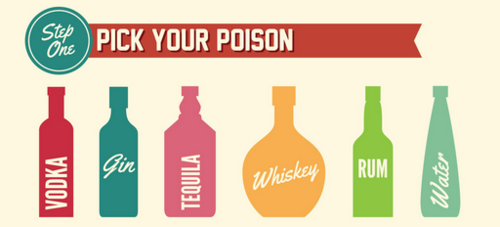
The most popular drinks to infuse are vodka, gin and plain old water, simply because they have little to no taste and provide a good base for an infusion. However drinks like whiskey, rum and even tequila can be infused too – all you need is a little imagination! If you’re infusing alcohol, it’s good to know that the higher the proof, the more flavour it will draw from your ingredients. You should also choose good quality alcohol, because no amount of infusing will make bad booze taste better. It’s crucial to choose flavours that truly complement the drink you wish to infuse, so that the end result is appetising as well as interesting to your customers.
Step Two: Select your ingredients
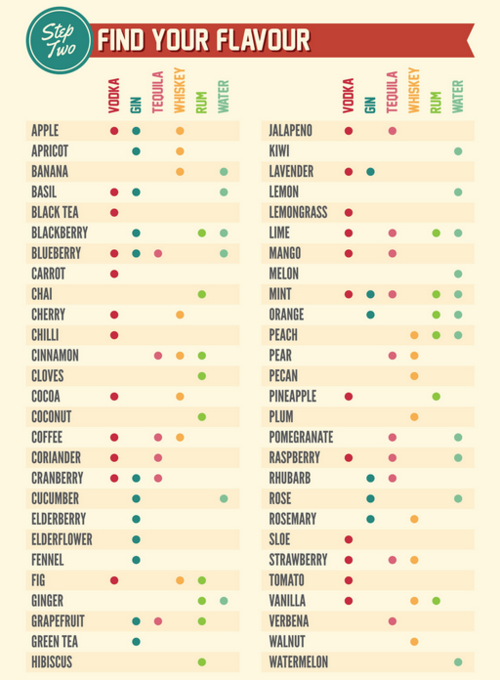
Not sure where to begin? Check out our infographic below for lots of inspiring infusion flavour ideas – keep it simple by choosing just one, or combine complimentary flavours, such as apple, mint and lime, for an infusion flavour experience!
Vodka, gin and tequila
If you’re not sure where to begin with infused alcohols, we’d recommend infusing vodka. It’s practically flavourless and so pairs well with a wide variety of flavours. Gin is similarly versatile, but as it is itself an infusion (grain spirit with Juniper berries), it works best with light, fruity and floral flavours as part of a cocktail. Tequila lends itself surprisingly well to infusions too, particularly with citrus fruits and sweet herbs, though it’s best to use light tequila for the fullest infused flavour. An infused tequila will certainly elevate the spirit in your guests’ minds from a bitter, often nasty-tasting shot to a highly enjoyable drink.
Whiskey and rum
As for the darker spirits, whiskey and rum also lend themselves to delicious infusions. In the colder months, pair whiskey with strong flavours such as coffee and cocoa, and for summer cocktails the spirit works well with dark, rich fruits. Rum is well-suited to a variety of infusing flavours too, though dark rum is a great partner for spices and red fruits, whereas white rum comes to life with tropical and zesty flavours.
(Not-so) plain old water
And last but not least, there’s water, where the sky’s the limit for infusion possibilities. Whichever you choose, always gently ‘bruise’ the infusion ingredients with a wooden spoon or muddler to help them break down and release the flavours into the liquid, and chop large or hard fruits into small pieces.
Step Three: Prepare your ingredients
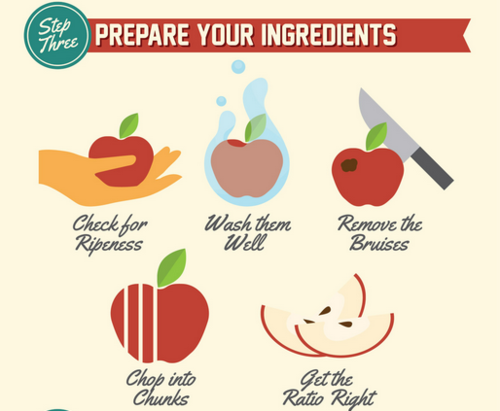
- Check for ripeness of your ingredients first, as this will affect the end flavour.
- Wash them well to remove any soil, bugs or pesticides from your ingredients and pat dry. Even better, choose only organic produce.
- Remove the bruises or any rotten parts from your ingredients.
- Chop into chunks if the ingredients are large and/or firm, or gently muddle soft fruits and herbs to bring out the flavours.
- Get the ratios right of your ingredients - the more you add, the stronger the flavour infusion will be, so go easy on those with potentially overpowering tastes like coffee, jalapeno, lavender and cucumber. You can always add more later on in the infusing process.
Step Four: Combine your concoction
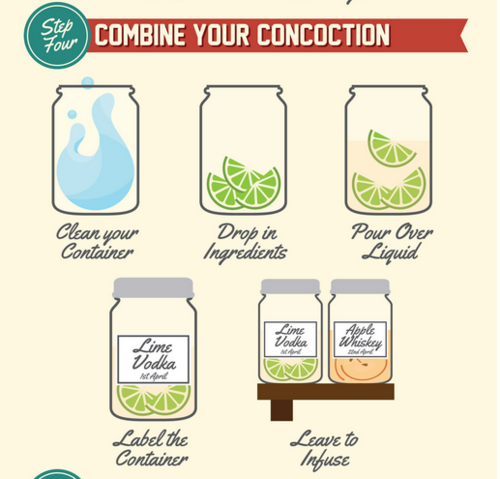
- Clean and sterilise a glass container, like a mason jar or bottle that has an airtight lid.
- Drop your ingredients into the bottom of the jar.
- Pour the base liquid over your ingredients and close the lid tight.
- Label the container with the ingredients and the date prepared.
- In a cool, dark place away from sunlight, leave your ingredients and drink to slowly infuse.
Step Five: Monitor the infusion process
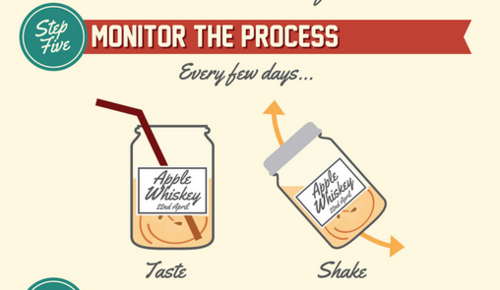
There’s no set time for which to allow your drinks to infuse. It usually takes just a matter of days, but can be weeks or even months, depending on the ingredients and quantity. It’s simply a case of trialling and tasting every day or so! However, herbs in particular tend to reach their peak after four days, so if you’re infusing them with another flavour it’s best to add them later on in the process. Most importantly, at regular intervals, shake the container to allow the flavours to mix and speed up the process.
Step Six: Strain and serve
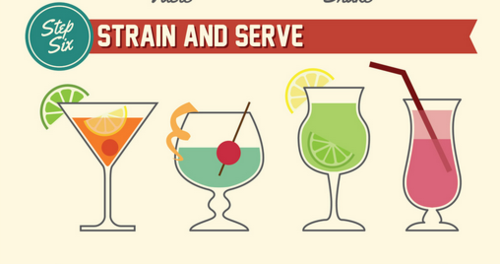
Once your infusion has achieved the ideal strength, strain the liquid through cheesecloth into another clean and sterilised container. Gently press the ingredients to squeeze out all the liquid. Add a label with the date prepared, and it’s ready to serve – to find the perfect presentation glasses for your infused concoctions, take a look at our Glassware Buyer’s Guide. Don’t throw away your ingredients! They could be used for cooking or baking, or even as a garnish for cocktails made with your infused drinks.
A few notes about hygiene…
When you’re serving infused drinks to customers in your bar or restaurant, hygiene is of course a top priority. Always use clean, sterile equipment, including containers, spoons and funnels; thoroughly clean your ingredients in salt water to rid them of bugs, soil and bacteria; and use the highest proof alcohol possible as this will help to eliminate bacteria or prevent it from forming in the liquid.
Have you tried infusing your own alcoholic or non-alcoholic drinks? Which flavours are your favourite, and how have customers responded? Leave us a comment below or tweet us at @BunzlLockhart."



Leave a comment